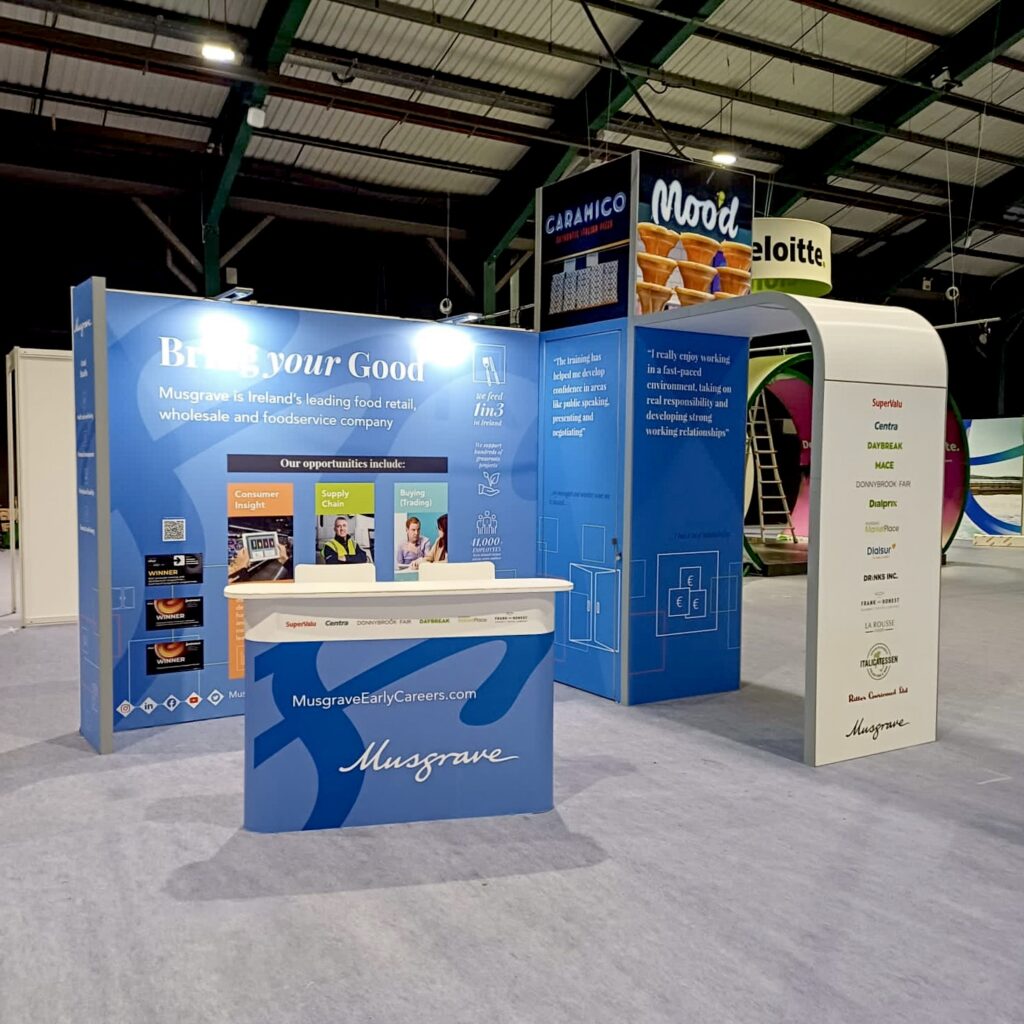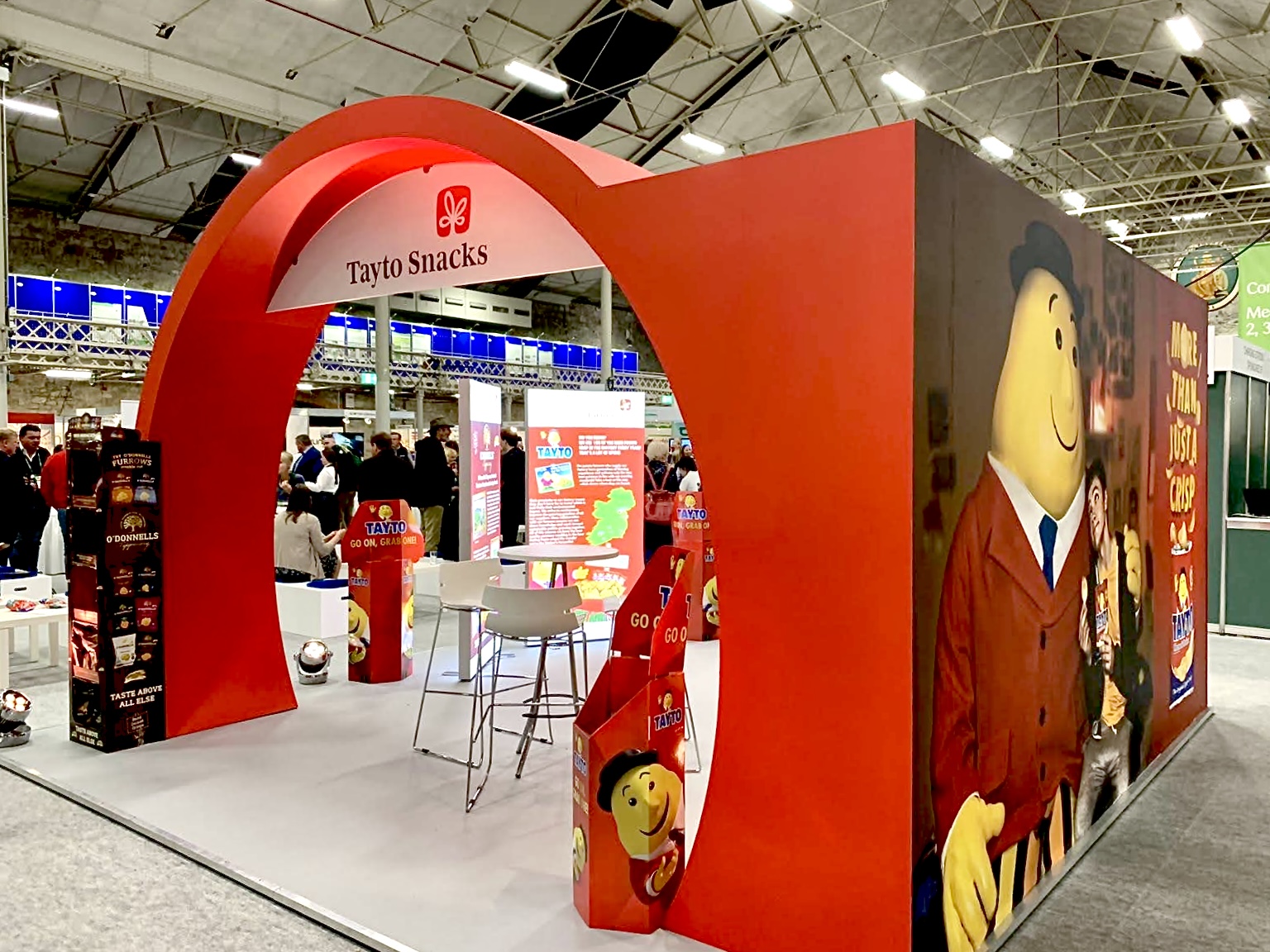Planning a successful stand at an exhibition can be a daunting task, but it is crucial for businesses to make a lasting impression on potential customers and clients. Exhibitions provide an opportunity for businesses to showcase their products and services, network with other professionals, and generate leads. However, with so many companies vying for attention, it is important to stand out from the crowd.
To plan a successful exhibition stand, businesses need to consider several factors. Firstly, it is important to select an appropriate show that aligns with the company’s objectives and target audience. Setting a budget is also crucial to ensure that the company can afford the costs associated with exhibiting, such as the cost of the stand, marketing materials, and staffing. Defining the audience and setting clear sales and leads targets can help businesses measure the success of their exhibition stand. Additionally, creating a welcoming and visually appealing stand that stands out from the competition is essential to attract potential customers and clients.
Overall, planning a successful stand at an exhibition requires careful consideration and attention to detail. By following a checklist and incorporating these key factors, businesses can maximise their return on investment and make a lasting impression on potential customers and clients.
Understanding Exhibition Stand Objectives
When planning a successful exhibition, it is crucial to have a clear understanding of the objectives that the event aims to achieve. This involves defining the purpose of the exhibition and identifying the desired outcomes. What is it that a company wants to achieve with an exhibition? Is it brand recognition, relationship building, or consideration for key products or services? Often, companies can begin without setting out clear objectives, which can be detrimental to the success of the exhibition. Furthermore, having too many objectives can lead to missing out on what is really important to the business. At Vinehall Displays, we recommend that companies set out between one to three key objectives to maximise their exhibition impact.
Exhibition objectives may vary depending on the nature of the event and the goals of the exhibitor. However, some common objectives to inform planning:
- Introducing new products or services to current customers
- Showcasing the company’s range of products or services to potential customers
- Generating leads and sales for those products or services
- Building brand awareness amongst potential customers
- Facilitate networking between industry professionals and brands
- Recruiting distributors or partners that will aid the company’s efforts
- Conducting market research to inform future decisions
Identifying Target Audience
Identifying your target audience is crucial in planning a successful exhibition stand. Your target audience is the group of people who are most likely to be interested in your product or service. To identify your target audience, consider the demographics, interests, and behaviours of your ideal customer. Once you have identified your target audience, you can tailor your exhibition stand to appeal to them. This can include using language and imagery that resonates with them, showcasing products or services that meet their needs, and providing information that addresses their pain points.
Understanding your goals and identifying your target audience is essential in planning a successful exhibition stand. By defining your objectives and tailoring your stand to your target audience, you can maximise your return on investment and achieve your desired outcomes.
Choosing the Right Exhibition Stand
When it comes to planning a successful exhibition stand, choosing the right exhibition is crucial. Exhibitions provide businesses with an opportunity to showcase their products and services to a targeted audience, generate leads, and build relationships with potential customers. However, not all exhibitions are created equal, and choosing the right one can be the difference between success and failure.

Researching Potential Exhibitions
The first step in choosing the right exhibition is to research potential events. This involves identifying exhibitions that are relevant to your business and target audience. There are several ways to research potential exhibitions, including:
- Industry associations: Many industry associations host exhibitions that are relevant to their members. Researching industry associations in your sector can be a good starting point for finding relevant exhibitions.
- Online directories: There are several online directories that list exhibitions by sector and location. These directories can be a useful tool for finding exhibitions that are relevant to your business.
- Competitor analysis: Researching your competitors can also be a good way to identify relevant exhibitions. If your competitors are exhibiting at a particular event, it may be worth considering that exhibition for your business.
Evaluating Exhibition Relevance
Once you have identified potential exhibitions, the next step is to evaluate their relevance to your business. This involves considering factors such as:
- Target audience: Is the exhibition likely to attract your target audience? If the exhibition is not relevant to your target audience, it may not be worth exhibiting.
- Cost: Exhibiting at an exhibition can be expensive, so it’s important to consider the cost of exhibiting versus the potential return on investment.
- Competition: Are your competitors exhibiting at the event? If so, it’s important to consider whether you can compete effectively with them.
- Location: Is the exhibition in a location that is convenient for your business and target audience?
By researching potential exhibitions and evaluating their relevance to your business, you can choose the right exhibition that will help you achieve your business objectives.

Designing Your Exhibition Stand
When it comes to designing your stand for an exhibition, there are a few key factors to keep in mind to ensure that it is both attractive and effective. Creating an attractive layout, incorporating branding, and ensuring accessibility are all important elements to consider.
Creating an Attractive Layout
The layout of your stand should be visually appealing and easy to navigate. Consider the flow of traffic and strategically place your products or services in a way that will draw attendees in. Use tables, shelving, or other display fixtures to showcase your offerings and make them easily accessible.
Incorporate eye-catching graphics and signage to help your stand stand out from the crowd. Use bold colours and fonts to make your messaging easy to read from a distance. Consider lighting options to highlight certain areas of your stand and create a welcoming atmosphere.
Incorporating Branding Into Your Exhibition Stand
Your exhibition stand is an extension of your brand, so it’s important to incorporate your branding in a way that is both consistent and memorable. Use your company’s colours, logo, and tagline throughout your stand to reinforce your brand identity.
Consider incorporating interactive elements, such as touchscreens or virtual reality experiences, to engage attendees and leave a lasting impression. Use branded promotional materials, such as brochures or business cards, to provide attendees with more information about your company and its offerings.
Promoting Your Stand
To ensure a successful exhibition, it is essential to promote your stand effectively. Here are some effective ways to promote your exhibition stand:
Utilising Social Media
Social media is a powerful tool for promoting your exhibition stand, both to existing customers, and new customers. You can use social media to create a buzz around your participation in the exhibition and to promote your stand to a wider audience. You can use social media platforms such as X (formerly Twitter), Facebook, and LinkedIn to:
- Share information about your stand and the products or services you will be showcasing.
- Post pictures and videos of your stand and products to generate interest.
- Use relevant hashtags to reach a wider audience.
- Engage with your followers and respond to their queries.
It is important to start promoting your exhibition stand well in advance of the event to maximise your reach and generate interest. If your company has a social media presence and a team to manage content, it is beneficial to arrange a plan to create posts in the run-up to the event, highlighting your presence. Additionally, advertising platforms such as Meta Ads and LinkedIn Ads Manager can be hugely beneficial for brand awareness around an exhibition.
Training Your Team
Preparing your team for an exhibition is crucial to the success of your stand. Your staff will be the face of your brand and will be responsible for engaging with potential customers, answering their questions, and representing your company in a professional and positive manner. Here are some tips for training your team to ensure they are ready to make the most of your exhibition stand:
Building Product Knowledge
Your team should have a deep understanding of your products or services. They should be able to explain the features and benefits of your offerings and answer any questions that potential customers may have. To build product knowledge, you can:
- Provide detailed product training sessions for your team
- Encourage your team to use your products or services themselves to gain firsthand experience
- Give your team access to product manuals, brochures, and other resources to help them learn
By building strong product knowledge, your team will be better equipped to engage with potential customers and showcase the value of your offerings.
Developing Customer Service Skills
In addition to product knowledge, your team should also have strong customer service skills. They should be friendly, approachable, and able to connect with potential customers. To develop customer service skills, you can:
- Provide customer service training sessions for your team
- Encourage your team to practice active listening and empathy
- Provide your team with scripts or guidelines for handling common customer interactions
By developing strong customer service skills, your team will be able to create a positive and welcoming atmosphere at your exhibition stand, which can help to attract potential customers and build relationships with them.
Overall, training your team is a critical part of preparing for an exhibition. By building product knowledge and developing customer service skills, your team will be better equipped to engage with potential customers and represent your brand in a professional and positive manner.
Measuring Success
Measuring success is an essential aspect of planning a successful exhibition stand. Exhibitors need to track engagement, analyze feedback, and evaluate return on investment to determine the effectiveness of their exhibition stand.
Tracking Engagement
Tracking engagement involves measuring the number of attendees who visited the stand, the duration of their visit, and the level of interaction with the stand staff. Exhibitors can use various tools to track engagement, such as lead retrieval systems, visitor tracking software, and surveys.
Lead retrieval systems allow exhibitors to capture attendee information, such as name, company, and contact details. Visitor tracking software can track the number of attendees who visited the stand and the duration of their visit. Surveys can gather feedback from attendees on their experience at the exhibition stand.
Analysing Feedback
Many companies neglect to gather feedback on exhibitions. Analyzing feedback involves reviewing the feedback received from attendees and identifying areas for improvement. Exhibitors can gather feedback through surveys, social media, and email.
Surveys can include questions on attendee satisfaction, interest in products or services, and suggestions for improvement. Social media can provide real-time feedback from attendees, such as comments and likes. Email can be used to follow up with attendees after the event and gather feedback on their experience.
Evaluating Return on Investment
Evaluating return on investment involves measuring the cost of exhibiting against the benefits gained. Exhibitors can use various metrics to evaluate return on investment, such as lead generation, sales revenue, and brand awareness.
Lead generation involves measuring the number of leads generated from the exhibition stand. Sales revenue involves measuring the amount of revenue generated from the exhibition stand. Brand awareness involves measuring the level of brand exposure gained from the exhibition stand.
Exhibitors can use these metrics to determine the effectiveness of their exhibition stand and make informed decisions for future exhibitions.
Choosing the Correct Exhibition Company To Partner With
When it comes to planning a successful stand at an exhibition, partnering with the right exhibition company can make all the difference. Exhibition companies play a pivotal role in helping businesses execute their vision, ensuring a seamless experience from start to finish.
Here are some key considerations when selecting the correct exhibition company:
Industry Experience
Experience: Look for an exhibition company that has experience in providing exhibition services in a range of industries. They should understand the unique dynamics and challenges of your company, which can lead to more effective strategies and solutions. Do they have a history of designing and building engaging exhibition stands? Check for client testimonials and reviews to gauge their reputation and the satisfaction of past clients.
Customisation: Your exhibition stand should be a reflection of your brand and objectives. Ensure that the exhibition company can tailor their services to your specific needs, whether you’re looking for a custom design or modular stand solutions.
Project Management: Effective project management is essential for a successful exhibition. Inquire about the company’s project management processes. Do they have a dedicated project manager to oversee the entire process, from design to installation? A well-organized team can help avoid last-minute hiccups.
Technology Integration: In today’s digital age, integrating technology into your exhibition stand can greatly enhance visitor engagement. Ensure the exhibition company can incorporate interactive displays, touchscreens, or virtual reality elements if they align with your objectives.
Sustainability Initiatives: If environmental responsibility is a priority for your business, inquire about the exhibition company’s sustainability practices. They should be able to provide eco-friendly materials and design options to reduce your carbon footprint.
Logistics and Storage: Consider the logistics of transporting and storing your exhibition stand components between events. Some exhibition companies offer storage and logistical support, which can simplify the process. This allows your company to focus on preparing for the exhibition, while your exhibition partner can take care of the logistics.
Creativity and Innovation: The ability to think creatively and innovatively is key to standing out at exhibitions. Look for an exhibition company that can bring fresh and unique ideas to the table, helping you create a memorable experience for attendees.
Partner With Vinehall Displays
At Vinehall Displays, we pride ourselves on being your ideal partner for all your exhibition planning needs. When it comes to selecting the perfect exhibition company that ticks all the boxes for a successful event, we stand out for several compelling reasons. First and foremost, our extensive industry experience is the cornerstone of our success. With over 30 years of dedicated involvement in the exhibition and display industry, we possess a deep understanding of various sectors. This expertise allows us to tailor our services precisely to meet the unique needs of your specific market.
We understand the intricacies of exhibition planning, which is why we provide dedicated project managers to oversee every facet of your project, from initial design concepts to on-site installation. Our meticulous approach ensures that your exhibition journey is smooth, efficient, and hassle-free.
Sustainability is a core commitment at Vinehall Displays. We offer eco-friendly practices materials, logistics and design options, helping you stay true to your company’s environmental responsibility while reducing your carbon footprint. . Our experience, creativity, attention to detail, and commitment to customer satisfaction make us the perfect choice for your exhibition needs. Partnering with Vinehall Displays means embarking on your next exhibition with the confidence that you have a dedicated team capable of helping you reach your objectives and leaving a lasting impression on potential customers and clients. We invite you to take a look at our past projects, and we look forward to partnering with you on your next exhibition.



